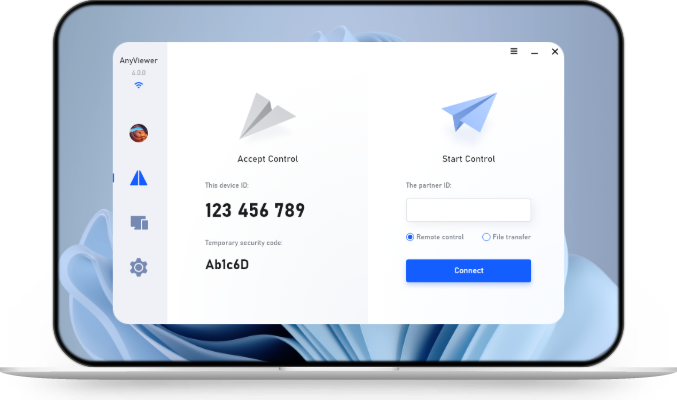How to Set Up Two-Factor Authentication in LogMeIn Rescue
Discover the step-by-step guide on implementing two-factor authentication in LogMeIn Rescue for enhanced security. Learn about the benefits, alternatives like AnyViewer, and best practices for secure remote support.
Introduction
In today's fast-paced world, where remote support has become the norm, ensuring the security of sensitive data is more critical than ever. LogMeIn Rescue stands out as a popular solution for secure remote support, and one of the key measures to enhance its security is the implementation of two-factor authentication.
Setting Up Two-Factor Authentication in LogMeIn Rescue
Significance of Two-Factor Authentication
Understanding the significance of two-factor authentication is crucial. This additional layer of security ensures that even if login credentials are compromised, unauthorized access remains a formidable challenge. It is a pivotal step in safeguarding sensitive information and adhering to stringent security standards.
Step-by-Step Guide
Step 1. Accessing Account Settings
To initiate the process, log in to your LogMeIn Rescue account. Proceed to the account settings section, where various security features are managed.
Step 2. Enabling Two-Factor Authentication
Locate the two-factor authentication option and toggle the switch to enable it. This straightforward step activates the additional security layer.
Step 3. Choosing Authentication Methods
LogMeIn Rescue provides multiple authentication methods. Select the one that aligns with your security preferences – whether it be receiving a text message, email, or using a dedicated authentication app.
Step 4. Verification Process
Follow the prompts to verify your identity. This typically involves entering a code received via the chosen authentication method. This step ensures that the setup is tied to the correct user.
Step 5. Backup Options
Consider setting up backup authentication methods. This ensures that you have alternative means of access in case your primary method becomes unavailable.
Step 6. Testing the Setup
Conduct a thorough test to ensure the two-factor authentication setup works seamlessly. This proactive approach ensures that the additional security measure is reliable when needed.
Benefits of Two-Factor Authentication
The advantages of implementing two-factor authentication extend beyond basic security measures:
Enhanced Security
By requiring users to provide two forms of identification, two-factor authentication significantly reduces the risk of unauthorized access. This added layer acts as a robust deterrent against potential breaches.
Protection Against Unauthorized Access
Even if malicious actors manage to obtain login credentials, the second authentication factor adds an extra hurdle, making unauthorized access much more challenging.
Compliance with Security Standards
For businesses that need to adhere to industry-specific security standards, two-factor authentication often becomes a mandatory requirement. Implementing this security measure ensures compliance and helps build trust with clients and partners.
Common Challenges in Implementing Two-Factor Authentication
Despite its numerous benefits, the implementation of two-factor authentication may encounter challenges:
User Resistance
Some users may initially resist the additional steps required for authentication. Clear communication and education on the importance of this security measure are crucial to overcoming resistance.
Technical Issues
Glitches in the setup process or compatibility issues with specific devices may arise. A thorough understanding of the chosen authentication method and responsive customer support can resolve such technical challenges.
Addressing and Overcoming Challenges
Proactive measures, such as organizing user training sessions and ensuring responsive customer support, can address challenges effectively. Timely communication and support are key to a smooth transition to enhanced security measures.
LogMeIn Rescue Alternatives
In the realm of secure remote support, it's essential to explore alternatives. AnyVieweremerges as a strong contender and a reliable LogMeIn Rescue alternative.
Overview of AnyViewer
AnyViewer offers secure remote access and support, making it an excellent choice for businesses seeking reliable solutions. Its user-friendly interface and robust security features make it a preferred option for many.
Comparison with LogMeIn Rescue
While LogMeIn Rescue has its merits, AnyViewer boasts features that might appeal to a broader audience. Factors such as ease of use, pricing, and additional functionalities should be considered when deciding between the two.
Highlighting AnyViewer's Features and Advantages
AnyViewer excels provides a user-friendly interface, robust security protocols, and a diverse set of features. These include file transfer, remote desktop control, and session recording – making it a compelling option for secure remote support.
Best Practices for Secure Remote Support
Implementing two-factor authentication is just one facet of ensuring secure remote support. Consider the following best practices to fortify your remote support infrastructure:
Regularly Updating Software
Frequently update all software, including remote support tools, to patch vulnerabilities and enhance overall security.
Educating Users on Security Measures
Empower users with knowledge of security best practices. This includes creating strong passwords, recognizing phishing attempts, and understanding the importance of two-factor authentication.
Monitoring Access Logs
Regularly review access logs to identify and address any suspicious activities promptly. Monitoring access logs provides insights into potential security threats.
Conducting Security Audits
Periodic security audits help identify areas of improvement and ensure ongoing compliance with security standards. Regular assessments contribute to a robust security posture.
Conclusion
In the ever-evolving landscape of remote support, prioritizing security is non-negotiable. Implementing two-factor authentication in LogMeIn Rescue is a crucial step toward fortifying your remote support infrastructure. However, it's equally important to consider alternatives like AnyViewer, which offers a robust and user-friendly approach to secure remote access. Overcoming challenges and adopting best practices ensures a comprehensive security strategy for remote support.
FAQs
Q1: How does two-factor authentication enhance security in LogMeIn Rescue?
Two-factor authentication adds an extra layer of protection by requiring users to provide two forms of identification, significantly reducing the risk of unauthorized access.
Q2: Can I use multiple authentication methods in LogMeIn Rescue?
Yes, LogMeIn Rescue allows users to choose from various authentication methods, including text messages, emails, and dedicated authentication apps.
Q3: What makes AnyViewera a strong alternative to LogMeIn Rescue?
AnyViewer stands out with its user-friendly interface, robust security protocols, and comprehensive set of features, making it a compelling alternative for secure remote support.
Q4: How often should software updates be performed for secure remote support?
Regular software updates should be performed promptly to patch vulnerabilities and enhance overall security. Monthly checks and immediate updates for critical patches are advisable.

